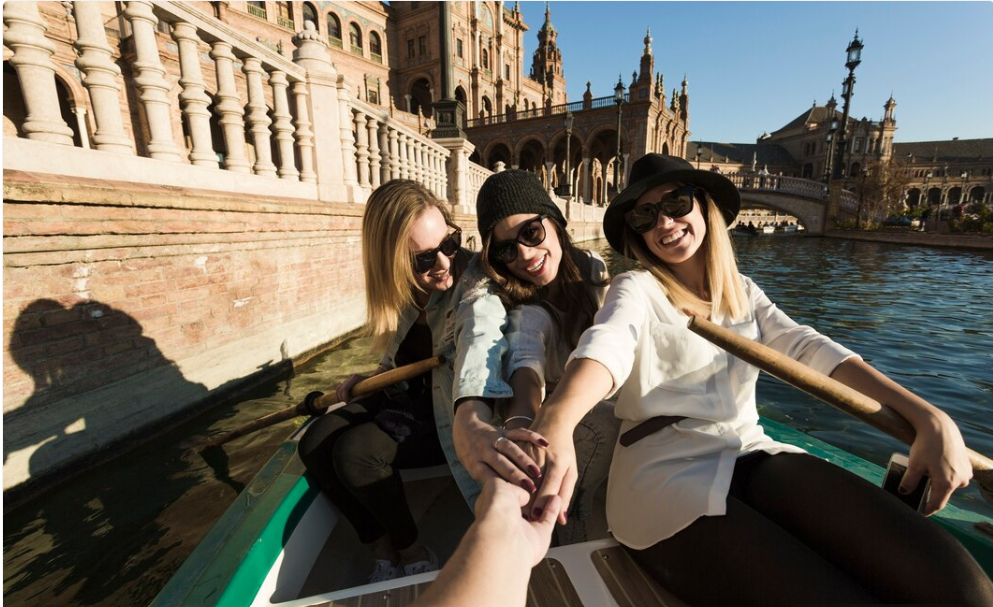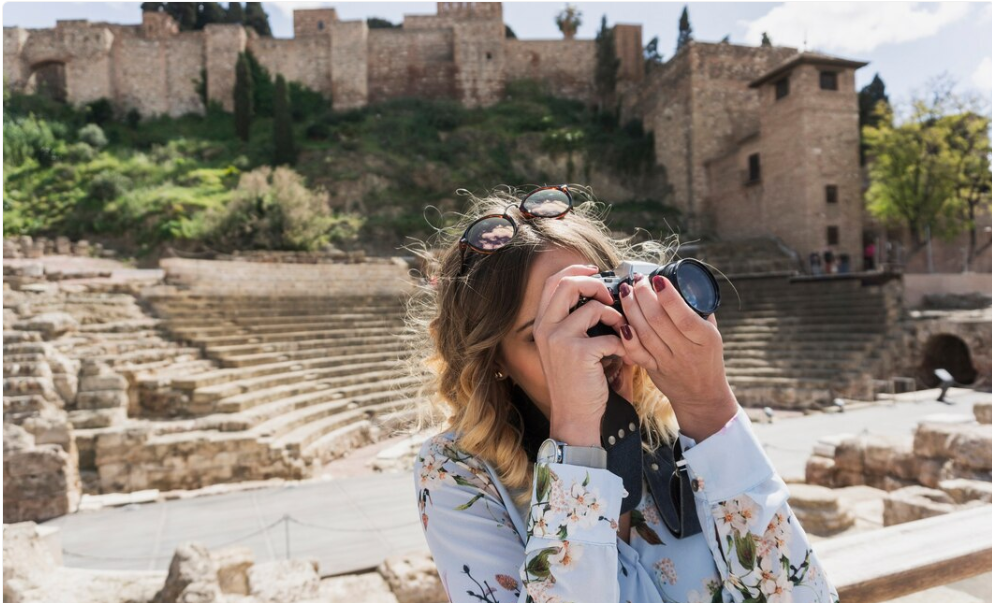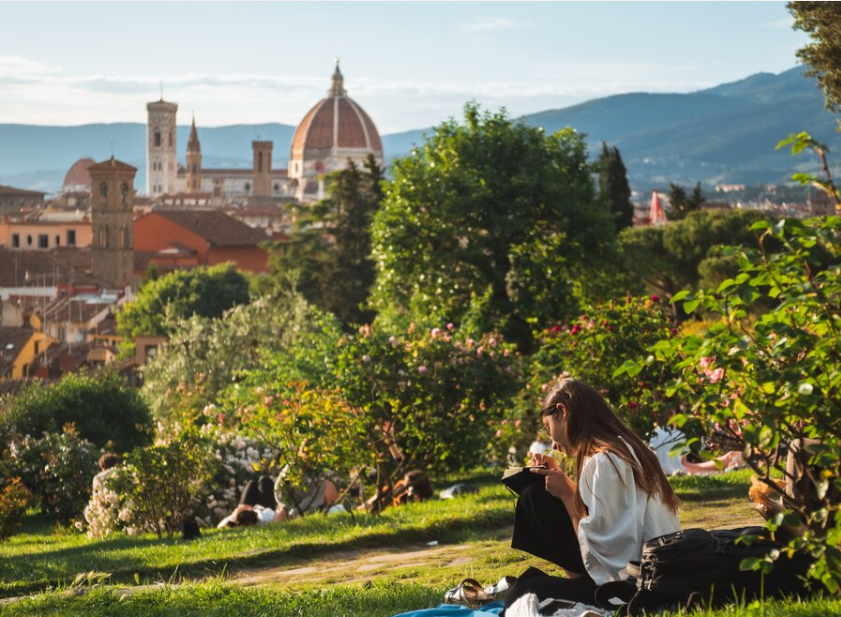
by Dulce Navarro | Apr 15, 2025 | Countries, Culture, Lifestyle, Travel
How to Plan the Ultimate European Getaway: Combining Luxury, Culture, and Adventure
Planning a European getaway can be both thrilling and overwhelming. With centuries of history, diverse cultures, luxury accommodations, and a landscape perfect for exploration, Europe offers something for every type of traveler. For business executives and professionals, combining comfort, culture, and excitement is key to crafting the perfect journey. Here’s how to plan an unforgettable European experience that strikes a balance between luxury, cultural immersion, and adventure.
1. Define Your Travel Priorities
Begin by outlining your primary goals for the trip. Are you looking to unwind in serene luxury, immerse yourself in history and art, or seek thrills in outdoor adventures? Defining your priorities will help you narrow down destinations and design a well-balanced itinerary.
2. Choose Your Destinations Wisely
Europe’s diversity allows for a multi-stop itinerary that caters to various interests:
- Luxury: Paris, Milan, Monte Carlo
- Culture: Rome, Vienna, Prague
- Adventure: Interlaken, Chamonix, the Dolomites
Mixing urban sophistication with countryside charm offers a rich and varied experience.
3. Invest in High-End Accommodations
Splurging on luxurious hotels or boutique resorts can elevate your entire trip. Many European cities are home to iconic hotels like The Ritz in Paris or Hotel Principe di Savoia in Milan, known for their exceptional service and exquisite design. For a more intimate setting, consider booking a luxury villa in Tuscany or a château in the French countryside.
4. Embrace Cultural Experiences
Europe is a treasure trove of culture. Make time for museum visits, historical walking tours, local performances, and wine tastings. Private guides can offer tailored insights and behind-the-scenes access to heritage sites, giving you a more profound appreciation for each destination.
5. Explore Culinary Excellence
One of the highlights of European travel is its cuisine. Dine at Michelin-starred restaurants, indulge in regional specialties, and consider booking a culinary tour or cooking class. Cities like San Sebastián, Florence, and Lyon offer unforgettable gastronomic experiences.
6. Add an Element of Adventure
Incorporate outdoor or adrenaline-filled activities to balance leisure with excitement. Options include skiing in the Alps, paragliding over Lake Annecy, hiking the Cinque Terre, or sailing along the Amalfi Coast. Tailor these activities to your energy levels and interests.
7. Plan with Convenience in Mind
Traveling across Europe can be seamless with first-class train travel, private car transfers, or even short flights. Apps and travel agencies specializing in luxury European travel can manage your bookings and transitions, ensuring your experience is smooth from start to finish.
8. Stay Connected and Secure
Keep your communication lines open with international roaming plans or local SIM cards. Utilize services that offer real-time travel assistance and ensure you’re covered with premium travel insurance for peace of mind throughout your journey.
9. Timing Is Everything
Consider traveling during the shoulder seasons—spring and fall—for fewer crowds and better availability at high-end accommodations. Many festivals and cultural events also occur during these times, adding a unique flavor to your itinerary.
10. Work with Experts
For a trip that runs like clockwork, consider working with a professional travel concierge. These experts can tailor your itinerary based on your preferences and handle logistics, restaurant reservations, and exclusive experiences that aren’t easily accessible to the general public.
Conclusion
Creating a dream European getaway that intertwines luxury, culture, and adventure is entirely possible with thoughtful planning. Prioritize what matters most to you, and be open to both indulgence and exploration. Europe’s charm lies in its ability to surprise and delight at every corner.
Stay Connected for More Travel and Lifestyle Inspiration. For more insights into travel, culture, and lifestyle tips, follow me on Instagram @salvadorordorica. If you’re seeking professional translation and localization services to enhance your global ventures, visit The Spanish Group — your trusted partner in bridging cultures worldwide.

by Dulce Navarro | Apr 15, 2025 | Business, Company, Countries, Europe, Lifestyle, Travel, Work
Discover Italy as a Digital Nomad: Best Cities and Tips
Italy, with its enchanting landscapes, rich culture, and exceptional cuisine, has increasingly become a hotspot for digital nomads. For professionals seeking a perfect balance between work and adventure, Italy offers an inspiring backdrop, stable internet infrastructure, and a quality lifestyle. Whether you’re working remotely for a company or building your own enterprise, navigating Italy as a digital nomad is a fulfilling experience—if done right. Here’s everything you need to know.
Why Italy Appeals to Digital Nomads
Italy blends the charm of old-world cities with modern amenities, making it a unique destination for remote workers. Beyond the food, art, and architecture, the country offers excellent public transportation, co-working spaces, and a growing community of like-minded digital nomads. Add to that the diversity of cities, from the fashion capital Milan to the coastal tranquility of Bari, and it’s easy to see why Italy remains a favorite among remote professionals.
Top Cities in Italy for Digital Nomads
1. Milan
Milan is the business and financial hub of Italy. It offers a dynamic work environment, excellent connectivity, and plenty of co-working spaces. The city’s international atmosphere and events like Milan Design Week make it a vibrant place for networking and inspiration.
2. Rome
The capital city combines historical grandeur with a bustling digital landscape. Rome is ideal for digital nomads who want access to major services and enjoy cultural landmarks during their off-hours. Just be prepared for slightly higher costs compared to other regions.
3. Florence
Florence attracts creative professionals with its artistic heritage and beautiful surroundings. While smaller than Rome or Milan, it has a relaxed vibe and a growing tech and start-up community. Co-working options are increasing, and living costs are more manageable.
4. Bologna
Home to one of the oldest universities in the world, Bologna is a lively student town with a youthful energy. The city is walkable, affordable, and filled with digital talent, making it a great base for remote workers in tech and education sectors.
5. Bari
If you’re looking for a more peaceful experience, Bari on the Adriatic coast offers Mediterranean charm with lower living costs. It’s becoming a hidden gem among digital nomads, especially for those focused on writing, design, and consultancy work.
Essential Tips for Digital Nomads in Italy
1. Get a Local SIM Card
Reliable internet is crucial. Consider getting a local SIM card from providers like TIM, Vodafone, or WINDTRE. They offer prepaid plans with generous data, perfect for remote work.
2. Use Co-Working Spaces
Italy has a thriving co-working culture. Spaces like Talent Garden, Impact Hub, and WeWork are available in major cities and provide a professional environment with networking opportunities.
3. Learn Basic Italian
While many Italians speak English, knowing basic Italian helps in everyday situations and enriches your overall experience. Apps like Duolingo or Babbel can be great starters.
4. Understand Visa Requirements
EU citizens have unrestricted access, but non-EU nationals should look into long-stay visas or Italy’s Self-Employment Visa. Make sure to consult with immigration professionals or official sources.
5. Embrace the Culture
Italy operates on its own time. Enjoy long lunches, afternoon espressos, and regional customs. Immersing yourself in the Italian lifestyle will not only improve your stay but also your productivity and well-being.
Costs of Living
The cost of living varies greatly across the country. While Milan and Rome can be pricey, cities like Palermo, Bari, and Naples offer affordable rents and amenities. On average, expect to spend around €1,200–€2,000 per month depending on your lifestyle and location.
Building a Community
Networking is key. Platforms like Meetup, Internations, and Facebook groups are great ways to meet fellow digital nomads. Many cities also host events, language exchanges, and tech meetups. Don’t hesitate to get involved—it makes a huge difference.
Final Thoughts
Italy is not just a beautiful country—it’s a dynamic place to work, live, and explore. From its lively cities to its picturesque coastal towns, it offers a multitude of opportunities for digital nomads to thrive. With the right preparation, an open mind, and a willingness to embrace a new way of life, your Italian adventure can be both personally enriching and professionally rewarding.
Stay Connected for More Travel and Lifestyle Inspiration.
For more insights into travel, culture, and lifestyle tips, follow me on
Instagram @salvadorordorica.
If you’re seeking professional translation and localization services to enhance your global ventures, visit
The Spanish Group — your trusted partner in bridging cultures worldwide.

by Dulce Navarro | Apr 14, 2025 | Business, Countries, Europe, Lifestyle, Travel, Work
The Best Hotels for Business Travel in Paris
Paris is not only the City of Light but also a global hub for business and commerce. Whether you’re attending a conference, closing deals, or networking with international professionals, selecting the right hotel can significantly enhance your productivity and comfort. Here’s a professional overview of the best hotels for business travel in Paris, including key amenities, locations, and services to help make your trip seamless and successful.
1. Four Seasons Hotel George V
Located just off the Champs-Élysées, the Four Seasons Hotel George V offers a luxurious yet business-friendly environment. With spacious meeting rooms, 24-hour business services, and high-speed internet throughout the property, it’s a top choice for executives. The on-site dining and wellness options also make it easy to balance work and relaxation.
2. Hôtel Le Bristol Paris
Renowned for its elegance and impeccable service, Le Bristol is ideal for business travelers who value discretion and efficiency. The hotel offers fully equipped conference spaces, private dining rooms for meetings, and in-room workstations. Located on Rue du Faubourg Saint-Honoré, it’s also close to major embassies and corporate offices.
3. Hyatt Paris Madeleine
This centrally located boutique hotel provides the perfect blend of style and practicality. With meeting spaces, private lounges, and a multilingual staff, it caters well to international business travelers. Its proximity to major business districts and shopping avenues makes it a strategic and pleasant choice.
4. Pullman Paris Tour Eiffel
If your business itinerary involves large-scale conferences or events, the Pullman Paris Tour Eiffel should be on your radar. Its extensive conference facilities, modern business amenities, and proximity to the Eiffel Tower make it both a functional and scenic option. The hotel is especially popular for tech and trade events.
5. Le Roch Hotel & Spa
For a more boutique experience, Le Roch Hotel & Spa is perfect. While it’s smaller in scale, it offers premium amenities, private meeting rooms, and a tranquil setting. The personalized service and contemporary design cater to creative professionals and entrepreneurs seeking inspiration in comfort.
6. Sofitel Paris Le Faubourg
With a prime location near the Place de la Concorde, the Sofitel Paris Le Faubourg caters to luxury business travelers with its elegant interiors and fully-equipped business center. This hotel is favored by professionals attending events in central Paris and those who enjoy top-tier hospitality services.
7. Hotel Lutetia
Located in Saint-Germain-des-Prés, Hotel Lutetia merges Art Deco sophistication with advanced business services. The hotel features modern boardrooms, luxury suites with workspaces, and a renowned concierge team ready to assist with any corporate need. It’s ideal for executives who want a refined yet productive environment.
8. Renaissance Paris Vendôme Hotel
For travelers seeking Marriott’s reliability combined with Parisian elegance, this hotel is a perfect choice. It offers a 24-hour business center, flexible meeting rooms, and ergonomic in-room workspaces. The Renaissance is a great choice for international guests attending meetings in central Paris or working remotely.
Key Considerations When Booking Business Travel Hotels in Paris
- Location: Choose a hotel near your primary business destinations to save time and maximize productivity.
- Wi-Fi & Technology: High-speed internet and tech support are essential for virtual meetings and staying connected.
- Business Amenities: Look for properties offering meeting rooms, workspaces, and office supplies.
- Concierge Services: A knowledgeable concierge can assist with transportation, reservations, and local business etiquette.
- Flexible Dining: Hotels with early breakfast, room service, and healthy options can keep you energized and on schedule.
Conclusion
Choosing the right hotel for business travel in Paris goes beyond comfort—it’s about enhancing your efficiency and creating the right setting for professional success. With a variety of premium hotels catering to business needs, the city offers exceptional options whether you’re here for a few days or an extended stay.
Stay Connected for More Travel and Lifestyle Inspiration. For more insights into travel, culture, and lifestyle tips, follow me on Instagram @salvadorordorica. If you’re seeking professional translation and localization services to enhance your global ventures, visit The Spanish Group — your trusted partner in bridging cultures worldwide.

by Dulce Navarro | Apr 9, 2025 | Business, Company, Countries, Europe, Travel, Work
Building Strong Business Relationships Across Cultures in Europe
Europe, with its rich tapestry of languages, traditions, and cultural norms, offers both remarkable opportunities and unique challenges for professionals and organizations conducting international business. Understanding how to foster strong and lasting business relationships across cultures is essential to success in this diverse environment.
Understanding the European Business Landscape
Europe is not a monolith. From Germany’s punctual efficiency to Italy’s relationship-focused dealings, business etiquette and practices vary widely. Successful business leaders must approach each country with cultural sensitivity and a willingness to adapt.
For instance, northern European countries like Sweden, Finland, and Germany often value direct communication, professionalism, and time management. In contrast, southern European countries such as Spain, Italy, and Greece place a greater emphasis on personal relationships, hospitality, and flexibility in timing.
The Importance of Cultural Intelligence
Cultural intelligence—the ability to relate to and work effectively across cultures—is increasingly seen as a critical skill in today’s global business environment. Leaders and professionals must go beyond mere awareness of differences and actively develop strategies for building trust and rapport with colleagues, partners, and clients from diverse backgrounds.
This means doing your homework before meetings, being mindful of cultural norms (like bowing in some places or avoiding first names in others), and embracing humility when learning through missteps. Over time, these practices build mutual respect and open doors to deeper collaboration.
Building Trust in a Multicultural Context
Trust is the cornerstone of every successful business relationship, but how trust is established can vary widely across European cultures. In countries like the UK and Germany, trust is built through reliability, competence, and adherence to process. In contrast, in France or Italy, trust often emerges through frequent in-person interactions, shared meals, and personal rapport.
Understanding this dynamic is key. A German executive may expect a structured agenda and a well-documented plan, while an Italian counterpart may prefer a warm conversation over coffee before diving into business. Navigating these nuances effectively can set the tone for a successful long-term partnership.
Communication Styles and Expectations
Misunderstandings often arise due to different communication styles. Some cultures, such as those in the Netherlands or Denmark, value blunt honesty and clarity, even in criticism. Others, such as in Belgium or Portugal, may employ more diplomatic or indirect language to preserve harmony and respect.
Recognizing these styles helps you frame your message appropriately and ensures your intent is received as you mean it. It also signals to your counterpart that you respect their cultural context, which goes a long way in relationship-building.
The Role of Language in Relationship-Building
While English is widely spoken across the European business world, making the effort to learn and use a few phrases in your partner’s native language can be a powerful gesture of goodwill. It shows cultural respect, demonstrates preparation, and often creates a more comfortable atmosphere.
In countries like France, Italy, or Hungary, even a simple greeting or thank-you in the local language can open doors and deepen connections. Language is more than just a communication tool—it’s a bridge between worlds.
Adapting to Decision-Making Styles
Different countries have different norms when it comes to decision-making. In Scandinavian and Dutch cultures, decisions are often made through consensus, reflecting egalitarian values. Meanwhile, in France or Spain, a more hierarchical model may be followed where decisions come from the top.
When you understand and respect these styles, you are better equipped to manage expectations, navigate negotiations, and close deals effectively. Flexibility in your approach and patience during extended decision timelines are key traits of a successful international executive.
Social Etiquette and Business Protocols
Seemingly minor behaviors can have a major impact on the impression you make. In Switzerland or Germany, punctuality is paramount, and being late can be seen as disrespectful. In Mediterranean cultures, time may be viewed more flexibly, but hospitality and personal engagement are critical.
Small gestures—like dressing appropriately, presenting business cards respectfully, or offering a proper greeting—can reinforce professionalism and cultural sensitivity, solidifying your standing as a reliable and considerate partner.
Strengthening Long-Term Relationships
European business relationships are often nurtured over time. Whether it’s through quarterly visits, holiday greetings, or thoughtful check-ins, maintaining regular contact is essential. Demonstrating commitment to the relationship beyond the transactional level helps reinforce trust and loyalty.
In-person meetings, particularly in southern Europe, are still highly valued, even in the digital age. Sharing a meal, discussing family, or inviting a partner to visit your offices are all ways to go beyond contracts and create deeper bonds.
Conclusion
Building strong business relationships across cultures in Europe requires more than just strategy—it requires empathy, adaptability, and a genuine appreciation for diversity. By taking the time to understand the values, customs, and expectations of your counterparts, you can foster trust, collaboration, and lasting success across borders.
Whether you’re navigating a deal in Paris, developing a partnership in Berlin, or launching a project in Milan, your cultural fluency will be one of your greatest assets.
Stay Connected for More Travel and Lifestyle Inspiration
For more insights into travel, culture, and lifestyle tips, follow me on Instagram @salvadorordorica. If you’re seeking professional translation and localization services to enhance your global ventures, visit The Spanish Group — your trusted partner in bridging cultures worldwide.

by Dulce Navarro | Apr 8, 2025 | Countries, Europe, Lifestyle, Travel
Discovering Hidden Gems in Italy: Secret Towns and Underrated Destinations
When people envision a trip to Italy, they often dream of the Colosseum in Rome, the canals of Venice, or the rolling hills of Tuscany. While these iconic spots certainly have their charm, Italy’s lesser-known corners offer a richness that’s just as captivating — with far fewer crowds. For the savvy traveler or seasoned executive looking to unplug in style, these hidden gems in Italy present an unmatched blend of culture, beauty, and authenticity.
Whether you’re planning your next leadership retreat, family getaway, or cultural immersion trip, discovering Italy’s quieter side is a journey worth taking.
1. Civita di Bagnoregio – The Dying Town in Lazio
Often referred to as “la città che muore” (the dying city), Civita di Bagnoregio sits precariously atop a hill in central Italy. With only a handful of residents and a surreal, time-stilled atmosphere, this ancient Etruscan town is accessible only by footbridge.
Its narrow alleys, medieval arches, and stunning views over the Tiber Valley make Civita perfect for a day trip or quiet weekend. It’s also an ideal destination for reflection or creative recharge, far from the urban rush.
Best For: Writers, thinkers, or anyone in need of deep calm.
2. Brisighella – A Fairytale Village in Emilia-Romagna
Nestled between Bologna and Florence lies the medieval village of Brisighella. Known for its picturesque clock tower, winding cobbled streets, and the Via degli Asini (the street of donkeys), this village remains untouched by mass tourism.
Here, travelers can enjoy slow food, olive oil tastings, and thermal spa treatments — all against a backdrop of pastel-hued houses and dramatic Apennine views.
Best For: Culinary travelers and wellness seekers.
3. Castelmezzano & Pietrapertosa – Italy’s Twin Cliffside Villages
In the region of Basilicata, two villages are dramatically carved into opposing cliff faces: Castelmezzano and Pietrapertosa. These villages are linked by the Volo dell’Angelo (Flight of the Angel), a zipline that offers a literal bird’s-eye view of the rugged Dolomiti Lucane mountains.
Beyond the thrill, these villages offer a rare look at southern Italy’s ancient traditions, including authentic Lucanian cuisine and folkloric festivals.
Best For: Adventure enthusiasts and off-the-beaten-path travelers.
4. Sabbioneta – A Renaissance Utopia in Lombardy
Designed in the 16th century by Vespasiano Gonzaga, Sabbioneta is a UNESCO World Heritage Site built entirely on Renaissance ideals. Often overshadowed by nearby Mantua, this planned city offers symmetrical streets, grand colonnades, and the impressive Teatro all’Antica — one of the first indoor theaters in Europe.
It’s ideal for a serene yet intellectually stimulating visit, perfect for leadership retreats or historic exploration.
Best For: Art lovers, architecture buffs, and history aficionados.
5. Orgosolo – Street Art and Spirit in Sardinia
Deep in the mountainous region of Barbagia, Orgosolo tells its story through walls. Once known for banditry, this Sardinian village transformed itself through over 200 murals depicting political struggle, cultural pride, and global unity.
The juxtaposition of bold, expressive art against serene mountain scenery makes Orgosolo one of the most surprising and soulful places in Italy.
Best For: Culturally curious travelers and photography lovers.
6. Tropea – The Coastal Gem of Calabria
While Amalfi and Cinque Terre steal the limelight, Tropea in Calabria offers equally stunning coastline without the hefty price tag or throngs of tourists. Perched on cliffs above the Tyrrhenian Sea, Tropea boasts crystalline waters, historic churches carved into stone, and some of the best red onions in the world.
The relaxed pace and breathtaking views make it a fantastic spot for a long weekend escape or corporate unwind.
Best For: Beach lovers, foodies, and laid-back travelers.
7. Collodi – The Village of Pinocchio
Located in Tuscany near Lucca, Collodi is the childhood home of Carlo Lorenzini, author of The Adventures of Pinocchio. The whimsical theme park Parco di Pinocchio, 17th-century gardens at Villa Garzoni, and butterfly sanctuary create a magical atmosphere that’s perfect for creative families or nostalgic visitors.
Best For: Families and travelers with a love for literature and imagination.
8. Trento – A Refined Alpine Capital
Tucked away in the Trentino-Alto Adige region, Trento is a city that blends Italian elegance with Alpine charm. Known for its Renaissance palaces, excellent wine culture, and proximity to the Dolomites, Trento is a fantastic base for those wanting to explore northern Italy’s scenic outdoors with a touch of sophistication.
Best For: Business travelers and alpine explorers.
Why Discovering Italy’s Hidden Gems Matters
Italy is a country that rewards curiosity. While the “big five” (Rome, Venice, Florence, Milan, Naples) offer undeniable appeal, the heart and soul of Italian life are often found in its small villages and quiet towns.
Choosing these lesser-known destinations not only leads to more authentic experiences but also supports local economies, reduces travel strain on over-touristed sites, and enriches your understanding of Italy’s diverse regions.
Whether you’re planning a solo getaway, a wellness retreat, or a cultural team-building trip, stepping away from the guidebook favorites can result in memories that are uniquely yours.
Pro Tips for Visiting Italy’s Hidden Gems
- Rent a car: Public transportation to these smaller towns can be limited. A car offers flexibility and access to remote spots.
- Learn basic Italian phrases: Locals appreciate the effort and it can lead to more genuine connections.
- Travel in shoulder seasons: Late spring and early fall offer perfect weather with fewer tourists.
- Book accommodations early: Boutique hotels and B&Bs fill quickly in smaller towns.
- Be respectful: These destinations often see far fewer tourists, so preserving their charm depends on responsible travel.
Conclusion
Italy’s lesser-known destinations are treasure troves of history, cuisine, natural beauty, and human connection. They remind us that luxury is not always about five-star hotels or Michelin-starred restaurants — sometimes, it’s about stillness, discovery, and sharing a table with locals who welcome you like family.
Embrace the road less traveled and discover a side of Italy that most miss — but none forget.
Stay Connected for More Travel and Lifestyle Inspiration
For more insights into travel, culture, and lifestyle tips, follow me on Instagram @salvadorordorica. If you’re seeking professional translation and localization services to enhance your global ventures, visit The Spanish Group — your trusted partner in bridging cultures worldwide.

by Dulce Navarro | Apr 7, 2025 | Countries, Culture, Europe, Lifestyle, Travel
French Riviera Travel Guide: Where to Stay, Dine, and Explore in Style
The French Riviera—known locally as the Côte d’Azur—is one of the most glamorous and captivating destinations in the world. With its sun-drenched beaches, charming villages, luxury resorts, and vibrant cultural scene, it draws travelers seeking both indulgence and authenticity. Whether you’re planning a weekend escape or an extended Mediterranean getaway, this guide will help you discover the best of the French Riviera—where to stay, dine, and explore in style.
Where to Stay: The Most Elegant Accommodations on the Riviera
1. Hotel du Cap-Eden-Roc (Antibes)
This legendary property is the epitome of luxury on the Riviera. Nestled on the southern tip of Cap d’Antibes, Hotel du Cap-Eden-Roc offers timeless elegance, world-class service, and spectacular sea views. It’s been the choice of celebrities, royals, and discerning travelers since 1870.
2. Grand-Hôtel du Cap-Ferrat, A Four Seasons Hotel (Saint-Jean-Cap-Ferrat)
For those seeking understated sophistication, this hillside gem offers panoramic views of the Mediterranean, lush gardens, and serene spa experiences. The hotel combines French charm with Four Seasons’ impeccable service, making it a perfect base for luxury travelers.
3. Château Eza (Èze Village)
If you’re after romance and authenticity, Château Eza is a 400-year-old château perched in the medieval village of Èze. With rooms that look over the sea and cobblestone paths that transport you back in time, it’s a boutique experience like no other.
4. Hôtel Martinez (Cannes)
For the traveler wanting to experience Cannes’ famed glitz, Hôtel Martinez is an iconic spot on the Boulevard de la Croisette. Its private beach, art deco interiors, and La Palme d’Or—its two Michelin-starred restaurant—are Cannes classics.
Where to Dine: Riviera Cuisine with a View
1. La Chèvre d’Or (Èze)
Located within the walls of a medieval village, this two-Michelin-starred restaurant offers not only exquisite cuisine but also panoramic views over the Côte d’Azur. Expect refined Mediterranean dishes crafted from local ingredients and presented with artistic flair.
2. Le Louis XV – Alain Ducasse (Monaco)
This three-Michelin-starred jewel inside Hôtel de Paris Monte-Carlo is a celebration of Riviera gastronomy. Helmed by Alain Ducasse, the menu is a poetic tribute to Provence and the Mediterranean, offering the ultimate fine-dining experience.
3. Loulou Ramatuelle (Saint-Tropez)
Combining Parisian chic with Riviera cool, Loulou Ramatuelle is a stylish beach club where the food is as fashionable as the guests. Ideal for long lunches and sun-kissed afternoons with a chilled rosé in hand.
4. Boccaccio (Nice)
For something more approachable but still refined, Boccaccio in Nice is known for its beautiful seafood platters and upscale Italian-influenced menu. The elegant Belle Époque setting adds to the experience.
Where to Explore: Hidden Gems & Iconic Destinations
1. Saint-Paul-de-Vence
This picturesque hilltop village is a haven for art lovers. Wander through its narrow cobbled lanes, visit local galleries, and stop by the Fondation Maeght—a modern art museum with works by Miró, Chagall, and Giacometti.
2. Villefranche-sur-Mer
Less crowded than neighboring Nice, this charming fishing village offers vibrant façades, a tranquil harbor, and excellent dining by the sea. It’s a perfect spot for a peaceful Riviera afternoon.
3. The Lérins Islands
Just off the coast of Cannes, these serene islands offer nature trails, historic monasteries, and quiet coves perfect for a dip. Sainte-Marguerite is known for the Fort Royal and its former prisoner, the Man in the Iron Mask.
4. Cap d’Antibes Coastal Walk
For a scenic yet accessible hike, the coastal path around Cap d’Antibes offers dramatic cliffs, hidden beaches, and views of luxury villas. It’s the perfect way to experience the natural beauty of the region.
5. Monaco
This tiny principality is packed with luxury. Explore the opulent Monte Carlo Casino, the Prince’s Palace, and the legendary Formula 1 circuit. For a quieter moment, visit the Oceanographic Museum or take in the views from the Exotic Garden.
Tips for Stylish Riviera Travel
Pack Smart, Dress Chic
The Riviera has a refined dress code. Think linen shirts, maxi dresses, espadrilles, and light cashmere for cool evenings. Bring a sunhat, designer sunglasses, and something formal if you plan on dining at Michelin-starred restaurants or attending events.
Rent a Convertible
The coastal drives from Nice to Menton or Saint-Tropez are some of the most scenic in the world. A classic convertible lets you enjoy the sea breeze in style. Just make sure to reserve early during the summer season.
Go Beyond the Summer
While summer is peak season, visiting in spring or early autumn offers pleasant weather, fewer crowds, and often better rates. April to June or September to October are ideal for a more relaxed experience.
Learn a Few French Phrases
Even basic greetings and phrases go a long way in enhancing your experience. The locals appreciate the effort and it adds to the authenticity of your trip.
Stay Connected for More Travel and Lifestyle Inspiration
For more insights into travel, culture, and lifestyle tips, follow me on Instagram @salvadorordorica.
If you’re seeking professional translation and localization services to enhance your global ventures, visit The Spanish Group — your trusted partner in bridging cultures worldwide.






